Most Massive Star ever R136a1
Look up at the night sky. On a clear, dark night with normal vision, you can literally see thousands of stars.
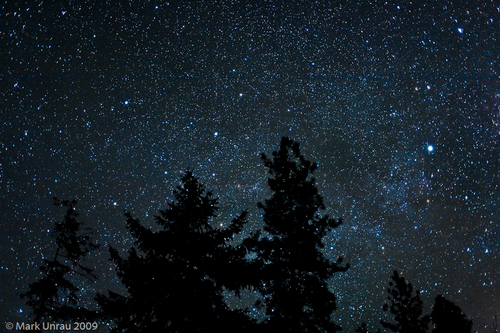
Some of them are barely visible, others shine so brightly that they come out when the sky's still blue! Why do some appear brighter than others? Two reasons. Some stars are simply closer to us, but others, intrinsically, shine spectacularly bright. Let's take a look at a small section of the Southern sky
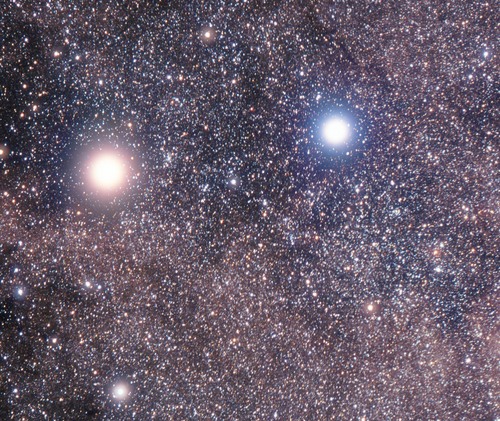
Alpha Centauri (in yellow, above) is one of the brightest stars in the night sky, coming in at #4 on the list. It's similar to our Sun, only a little bit bigger and brighter, and has roughly the same color. The reason it's so bright, though, is that it's so incredibly close to us: only 4.4 light years distant.
But take a look at the second brightest star above (the blue one). Known as Beta Centauri, it's the 10th brightest star in the night sky, appearing about 70% as bright as its yellow neighbor. Except Beta Centauri isn't really Alpha Centauri's neighbor. While that yellow star is 4.4 light years away, Beta Centauri, the blue one, is 530 light years away, or over 100 times as far away!
Why then, does Beta Centauri appear almost as bright as Alpha Centauri?
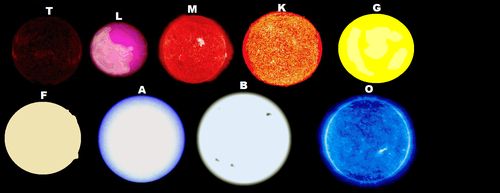
Well, because it's a different type of star! If we go by color, yellow Alpha Centauri is a "G-type" star, much like our Sun. But Beta Centauri is one of the bluest stars out there, making it a "B-type" star. In fact, if it were just a little bluer, it'd be an "O-type" star, the bluest of them all.
Surprisingly, we can learn a lot from a star's color. For the whole time a star burns Hydrogen into Helium -- just like our Sun has been doing since its birth billions of years ago -- its color is indicative of another property. Take a look at the picture below.
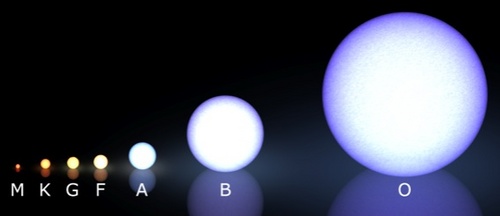
The bluer ones are bigger, too. In fact, the bluer a star is, the larger, brighter, and hotter it is as well! And Tyrell from Blade Runner got it right: the brighter, hotter, bluer stars burn through their fuel faster!
A "G-star" like our Sun will live about 10 billion years. A star only 10% as massive, an "M-star", will live many trillions of years! But what if you start looking at stars more massive than our Sun? Well, you need to know where to look, because the very massive ones are rare. We find most of them inside star clusters, like 30 Doradus, below.
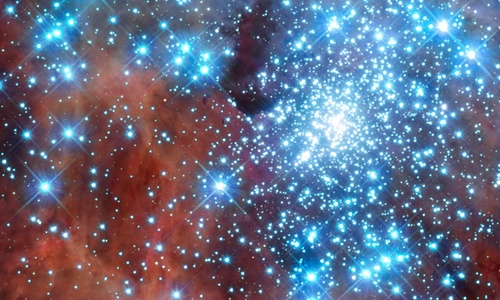
A "B-type" star, like Beta Centauri, can be up to about 12 times as massive as our Sun, and instead of 10 billion years, only lasts about 10-20 million years before it burns out all of its fuel. Despite being over 100 times farther away and having much more fuel to burn, a B-type star can appear incredibly bright and short-lived, because it burns its fuel over 10,000 times faster than the Sun does!
But they're not even the most extreme stars in the Universe. If you can get more than around 12-15 times the mass of the Sun together in one star, you're going to get the brightest, hottest star type in the whole Universe, an "O-type" star, like Alnitak (below).
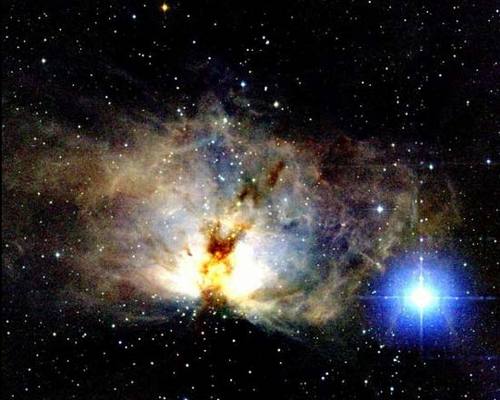
But why muck around with a star only 28 times as massive as our Sun? Even though Alnitak has a total lifetime of just one or two million years or so, we can find even brighter, heavier, shorter-lived ones. If we look near the center of the galaxy, we can find star WR 102ka, located in the Peony Nebula below.
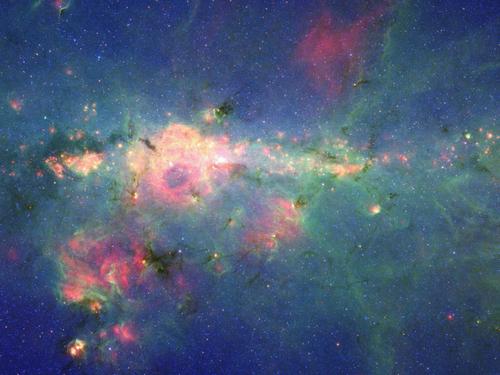
WR 102ka is located where the bright white spot near the center of the image is, and it weighs in at a whopping 175 times the mass of the Sun! At around 25,000 light years away, WR 102ka has an incredibly interesting property: it's already dead! A star that massive will live less than 25,000 years, and since the light we're seeing now left that star 25,000 years ago, it's already burned up all of its fuel, and has likely died in a tremendous supernova explosion!
But WR 102ka, you need to move your skinny butt over. There's a new star in town that's got you beat.

(And click to enlarge this image above.)
Deep inside the Large Magellanic Cloud, 160,000 light years away, the star R136a1 has just shattered all of the records.
It weighs in at 265 times the mass of the Sun. It's so massive that it's probably already blown off something like 60 times the mass of the Sun, meaning it was over 300 times as massive as the Sun when it was born. A star like this is unheard of, and many were dubious that a star like this could have even existed! With a lifetime under 10,000 years, we're lucky to have caught a glimpse of it at all!
And since it is the biggest star we've ever found, would you like to see an illustration of just how big it is?
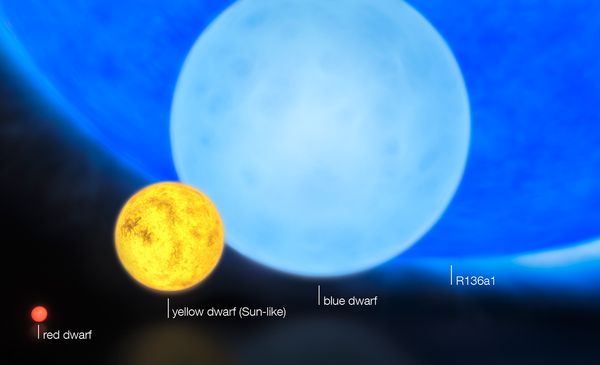
In terms of size, this star is to the Sun like Jupiter is to the Earth: huge!
In terms of energy output, this one star, R136a1, radiates more than 10 million times faster than our Sun. Imagine that, for a minute. If you replaced the Sun with this star, you'd be able to place Earth nearly an entire light-year away from the Sun, and life would still survive. For comparison, in our solar system, it takes sunlight less than nine minutes to reach us.
So be aware that behemoths like this are out there, burning through Hydrogen with the fury of millions of Suns, and be very, very

